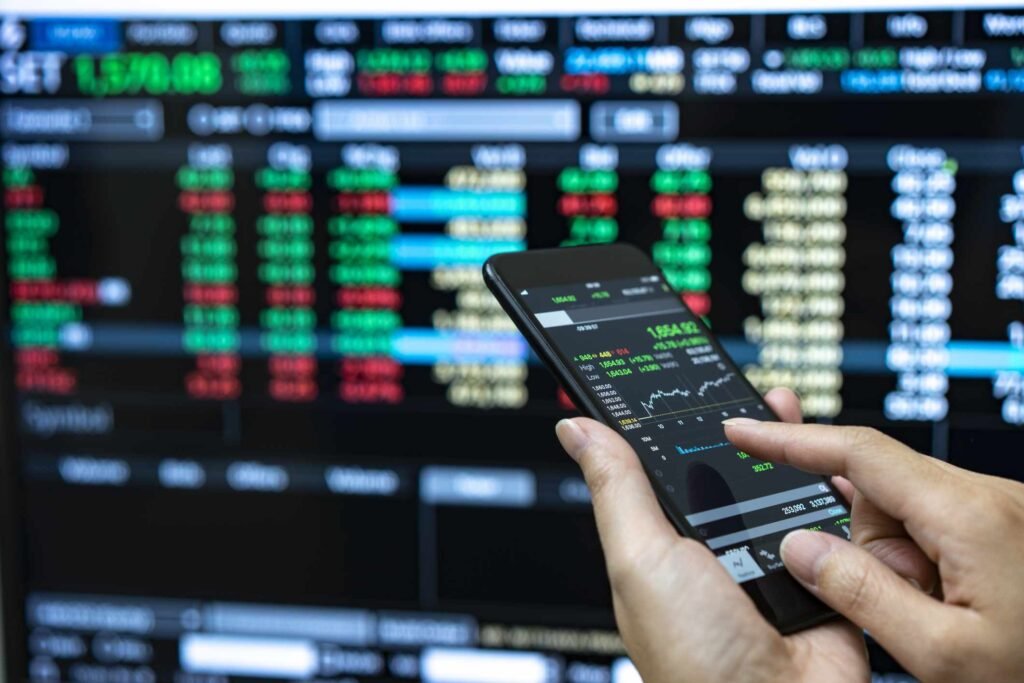What is Program Trading?

What is Program Trading?
Program trading, also known as system trading, is performed by machines that use programs or algorithms and employ established strategies to trade the market effectively and efficiently without human intervention and is generally used by large investors and companies in large volume
How Does it Work?
To operate a trading program, a few algorithms are introduced, e.g. sell stocks of a portfolio when the valuation of the stocks exceeds 10% of the total value of the portfolio. Market places orders as mentioned in the program, if the necessary conditions are met, the applications continue to run without external support and execute the orders independently
Types of Program Trading
A trader generally buys a group of stocks, mostly replicating popular stock indices like the SandP 500 and so on. In this way, a brokerage is carried out in addition to a commission.
Another type of negotiation is known as base operations. In this case, a prominent investor will generally take a position in similar securities to take advantage of price inefficiencies. a security is bought and a similar one is sold in order to reduce market risk.
Counter trades are also used in various markets. For example, to hedge the position of a security in the physical market, an option or futures could be sold if the desired security is not available at the estimated price derivatives support.
EXAMPLES
Another example could be buying or selling securities automatically to maintain balance in the portfolio. The program could be taught to buy or sell the security as soon as possible value goes up or down the 10% mark of the total portfolio.
Program Trading Strategy
Such trading happens in a large volume and requires a strategy to perform. First of all, a strategy or a pattern is observed or devised, and then programs are coded. Once the entire set-up is ready, these programs wait for the required trigger point, and as soon as the market meets the coded criteria, trade happens. Humans do monitor the process of the programming and processing of trades.

ADVANTAGES
- • The trading program is incredibly fast, and multiple trades could be completed in just microseconds. In the arbitrage situation, buy and sell orders must be placed at the same time, and even the slightest delay could wipe out the profit margin. Hence, in these situations, trading algorithms are used.
- • Large or institutional investors generally use these trading and hedge funds etc. and usually order according to a fixed strategy.
- • Sometimes multiple stocks are required to purchase at the same time. Hence, software trading is useful in these circumstances.
- • The trading algorithm helps traders or arbitrageurs to seize opportunities for mispricing in the market due to its fast order placement functions in connection with the performance of predetermined strategies.
- • As machines exchange programs, they lack the human emotions and the obstacles they create. Automated trading does not involve indiscipline, fear, greed and other emotions that pose an obstacle to the desired strategy.
DISADVANTAGES
- • In the decade leading up to the 1990s, many market participants complained of extreme volatility, primarily caused by program trading. In a wake-up call, the NYSE has imposed certain restrictions during times of massive volatility. Depending on the price of a share, program trading is stopped or downgraded. It is widely known as circuit breakers. Sometimes this can limit trading strategies or efficiency.
- • Program Trading is quite expensive in terms of data flow and personnel to operate. Not all traders can take advantage of these options because the costs are quite high.
- • Regardless of speed, precision and punctuality, it is still a machine and suffers from technical and mechanical failures. The programs are not foolproof and can make mistakes due to technical problems.
CONCLUSION
It is widely used in all markets and countries and provides a completely different paradigm for trading. Although it is expensive, competitive, and heavily watched, it grows with the passing days. Moreover, thanks to technological advancements and active participation in the securities markets, the days are not far off when it will become a norm in the trading fraternity.





